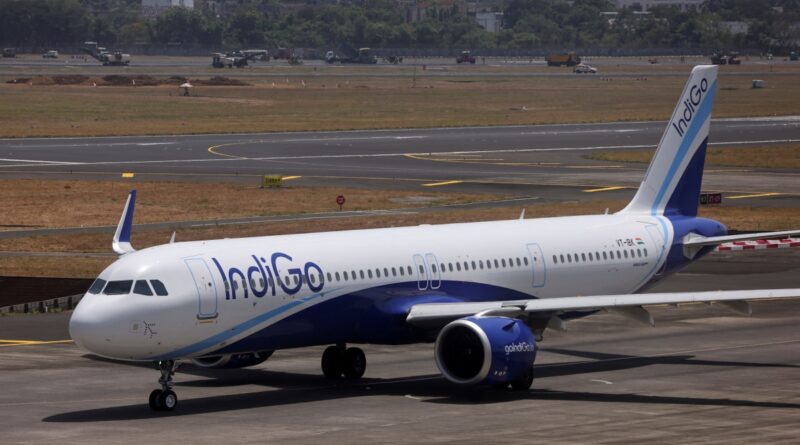Explained: What’s with Indian airlines and record plane deals
By India Today Business Desk: At the recently held Paris Air Show, two Indian airlines stole the limelight – Air India and IndiGo.
Tata-owned Air India finalised its $70-billion deal to acquire 470 aircraft from Boeing and Airbus, while IndiGo announced a 500-plane order from Airbus.
These are the two biggest orders in the history of commercial aviation. While Air India had announced its historic plane deal in February (it was the biggest commercial aviation deal in history), IndiGo went a step ahead by announcing its deal worth roughly $50 billion earlier this week.
Also Read | IndiGo-Airbus deal major win for UK aerospace, says PM Rishi Sunak
So, what’s with Indian airlines and record plane deals? The answer is simple: to increase capacities and gain more market share in the world’s fastest-growing aviation market.
Boosting capacities to capture growing demand
It’s no secret that Indian airlines went through a dark phase for over two years during the Covid-19 pandemic. But since then, there has been an unprecedented demand for air travel, and airlines have struggled to cope with it.
This report indicates that total air passenger traffic in India is expected to increase from 341 million during 2019-20 to around 827 million by 2032-33. That’s more than double the pre-pandemic level.
It is also worth mentioning that domestic air passenger traffic grew 15 percent year-on-year to over 13 million in May 2023, as per data from the Directorate General of Civil Aviation (DGCA).
Therefore, most major airlines are trying to gain a first-mover advantage to increase their fleet size and be ready to grab a greater share of the aviation market.
Also Read | Aircraft shortage hampering growth plans amid travel boom: IndiGo CEO
At the moment, IndiGo and Air India are two of India’s biggest airlines in terms of market share. IndiGo alone commands over 60 percent market share, while Tata Group’s Air India, Air Asia India, and Vistara saw their market share increase to over 9 percent, 7.9 percent, and 9 percent, respectively.
The newest entrant, Akasa Air, is also scaling up its operations rapidly and planning bigger aircraft orders, but it is still far behind in the race, even as its market share rose to 4.8 percent in May 2023.
And with Go First’s financial crisis and SpiceJet’s turbulent phase, it is clear that Air India and IndiGo will be the dominant players in the Indian aviation market.
The plane orders, therefore, make sense for both the airlines that seem to be betting on India’s economic boom and the subsequent boom in demand for air travel, both domestic and international.
Betting on the aviation boom
With the record deals, the two airlines are also getting ready to operate on as many routes as possible.
The government is rapidly working towards connecting remote areas by air and is planning to increase the number of airports in the country from 150 to 200 in the next five years.
Following the deal, Minister of Civil Aviation Jyotiraditya Scindia told reporters that the new planes would help Indian airlines expand at home and across continents.
Also Read | India’s domestic air traffic reaches 86% of pre-Covid level in 2022: IATA
At present, IndiGo operates a fleet of 300 planes and is set to take delivery of around 470 jets from a previous order with Airbus. This will be delivered by 2030.
With the new order, the airline’s total order book stands at more than 1,500 over the next decade and beyond. What’s more interesting is that IndiGo alone would have more than double India’s existing fleet of 700 planes across all airlines.
Opportunities are big, so are risks
Analysts have said the Indian aviation market is growing at a rapid pace – opportunities are big, but so are the risks.
Take, for example, the recent failure of Go First, the low-cost Indian airline, which is currently under bankruptcy protection after a period of severe financial turbulence.
While it blamed US jet engine maker Pratt and Whitney for its crisis, the biggest concern arises from the fact that it is the third Indian airline to collapse in just 11 years.
It is worth mentioning here that Go First’s bankruptcy plea, which offers it protection from aircraft lessors, could hurt the overall aviation market.
With the Go First episode, lessors may become reluctant to lease to Indian airlines at lower costs – a factor that could increase operational costs for all airlines, and the burden of which would ultimately fall on customers.
Also Read | Explained: Why Go First crisis could increase cost of air travel in India
Following the acceptance of Go First’s bankruptcy protection plea, aircraft lessors raised concerns about the restrictions on repossessing their assets in case of defaults. SpiceJet, another low-cost airline, is also facing a similar hurdle as lessors are worried about unpaid dues.
The rapid growth in India’s aviation market makes it critical for lessors, but there is also a need to protect their interests as it will ultimately help lower risk and moderate lease rental costs.
This is because most Indian airlines follow the sale-and-leaseback model, where they can sell planes to lessors and then lease them to cut costs.
Data suggests that this model accounted for 75 percent of plane deliveries in India from 2018 to 2022, compared with the global average of 35 percent.
Also Read | Go First crisis: Why top aircraft lessors are not happy with NCLT’s decision
But will the bigger bet pay off?
Some experts are not too sure about the record plane orders placed by Indian airlines. They feel that the over-ordering of planes may not have any material impact on the market share of IndiGo and Air India.
The two airlines have a combined domestic market share of around 80 percent and already have a much better scale compared to rivals.
A situation may also arise where the ongoing air travel boom could plateau, as demand fades after the pandemic.
Even then, the airlines are likely to benefit from their record orders as it will help them maintain their fleet and be ready for any opportunity in the future.
Moreover, it will also ensure stability in the overall domestic aviation market and pave the way for better connectivity at lower prices.




